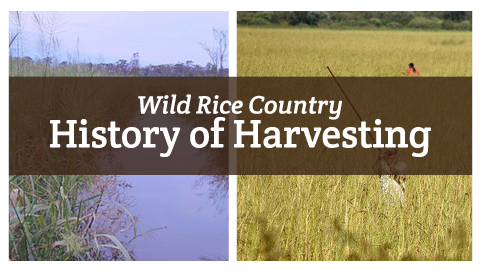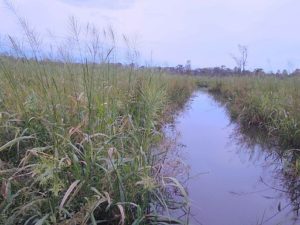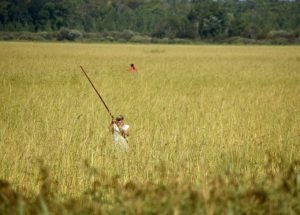
Now that the weather is cooling off and the autumn air is getting a little crisper, it’s finally time to pull out those heartwarming and belly-satisfying wild rice recipes!
Have you ever wondered where wild rice comes from or the process it takes to harvest it? Let us take you on a short journey through the long history of wild rice harvesting.
Above: Image by Brian Bill, U.S. Fish and Wildlife Service, via Wikimedia Commons.
Wild rice has been naturally abundant in the cold rivers and cool lakes of the Upper Midwest and Canada for a long time. In fact, wild rice has been an essential part of the landscape for animals and humans alike since prehistoric times. For early North American inhabitants, such as the Chippewa and Sioux Indians, wild rice was an essential staple grain. Wild rice served as an important cultural and spiritual force and was often seen as a gift from the Creator.
From its initial collection to today’s modern harvesting in Minnesota state waters, certain traditional and protected wild rice varieties are harvested by hand, using non-motorized canoes with the canoe-and-flail method to help preserve the tradition of this integral grain. Only licensed professionals are allowed to harvest, and they do so with only a pole and two rice beater sticks as tools.
Hand-harvesting is seen as a nod to tradition, but it also helps to ensure the quality of each harvest. Only mature and ripe kernels are collected, while immature kernels fall back into the water to prepare for the following year’s crop.
Above: Image by US Army Corp of Engineers via Flickr.
Commercial practices for harvesting wild rice across Minnesota, California, and Canada can vary greatly. They can also produce wild rice that looks and tastes significantly different from one another. Changes that significantly altered the harvest and production of wild rice include the concept of growing wild rice as a field crop in the later 19th century, mechanical harvesting of wild rice on private lands in the early 20th century, and the development of more shatter-resistant strains of wild rice in the second half of the 20th century.
Today, the wild rice that you see in grocery stores or in your own pantry may have been harvested by a traditional canoe-and-flail method, mechanically harvested by airboats in Canada, or commercially produced in California fields. Either way, take a second to appreciate the long and storied history of wild rice as you dip into your bowl of soup this autumn.
For more information on wild rice and the history of Canoe Wild Rice, visit our About Us page.


